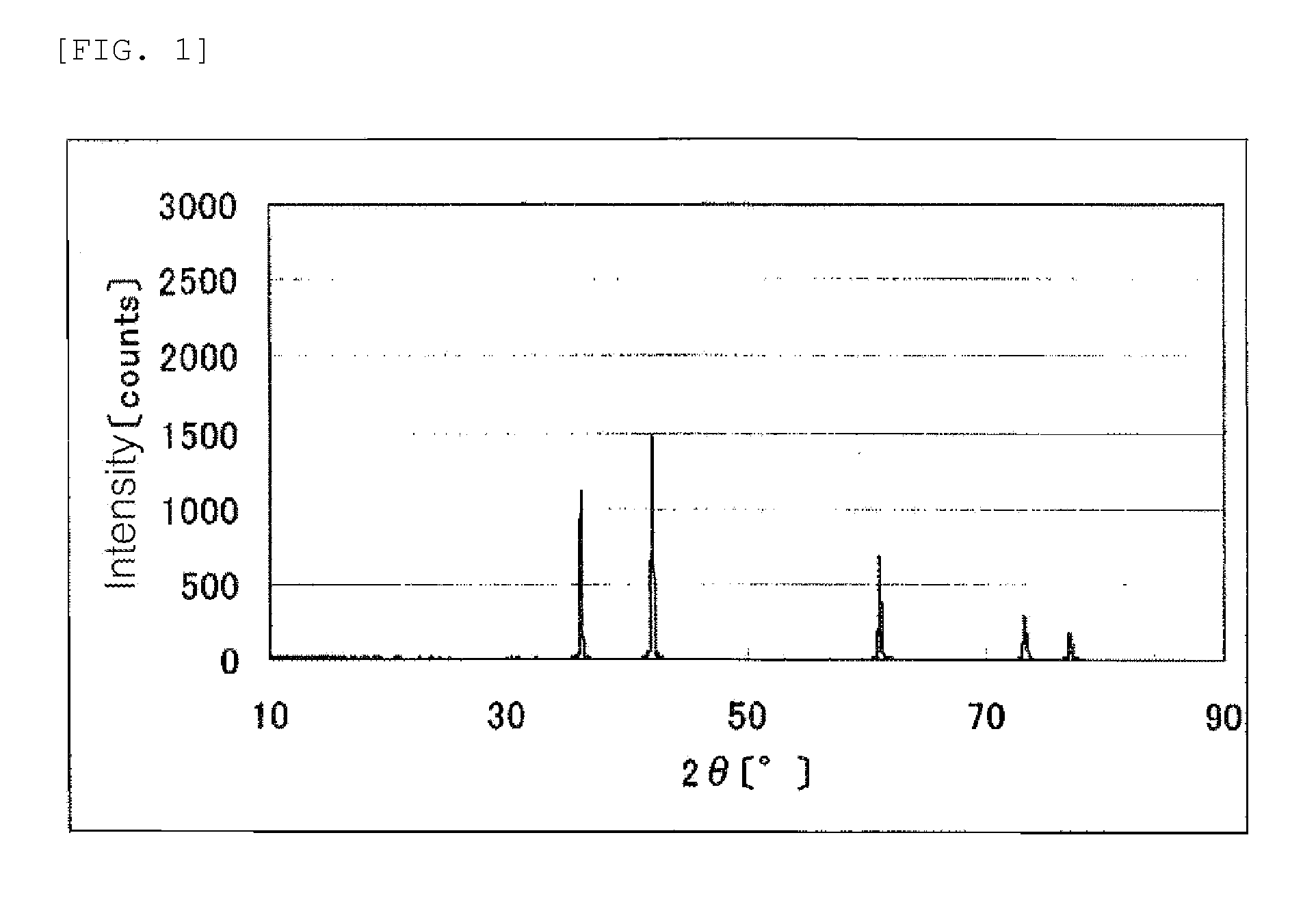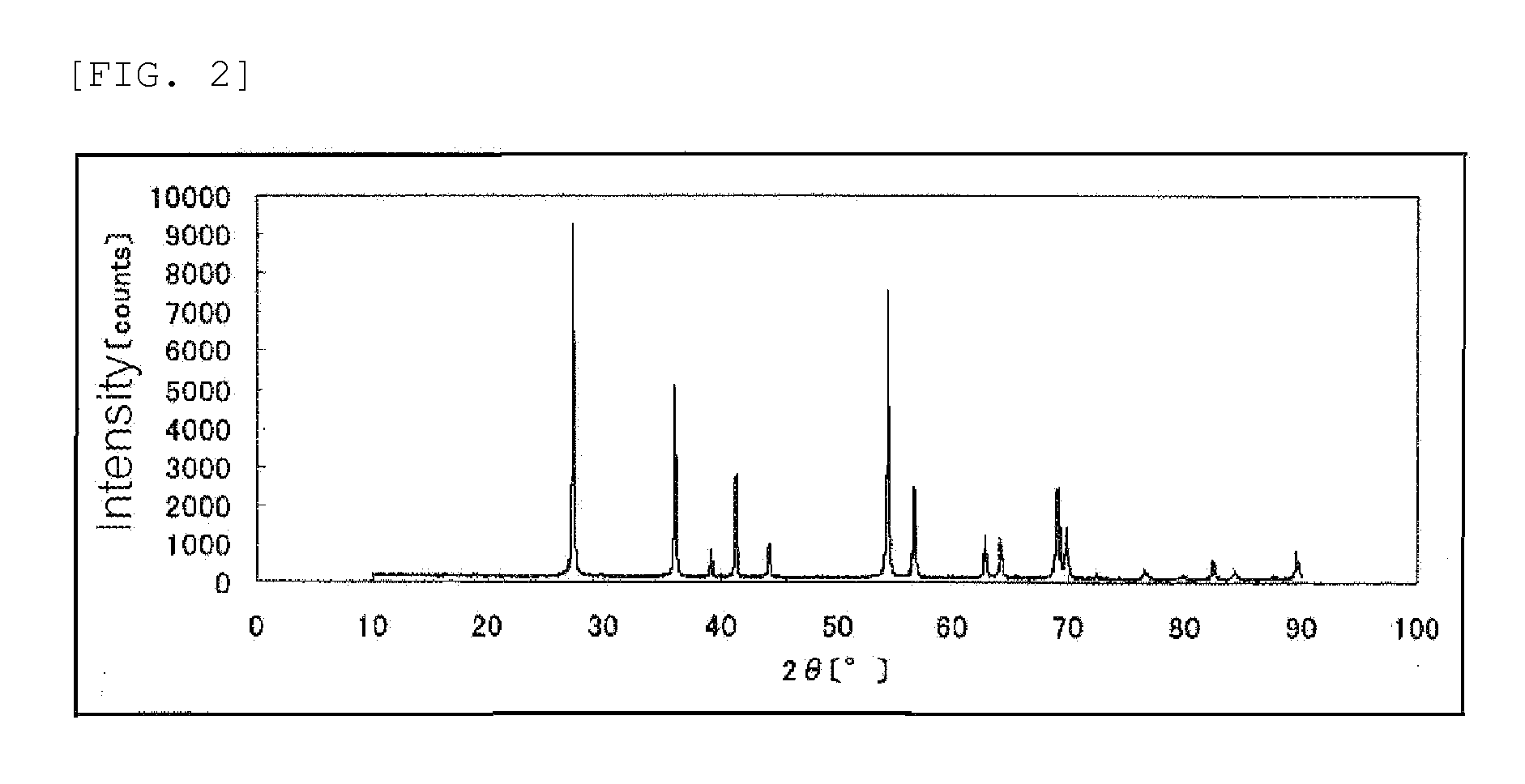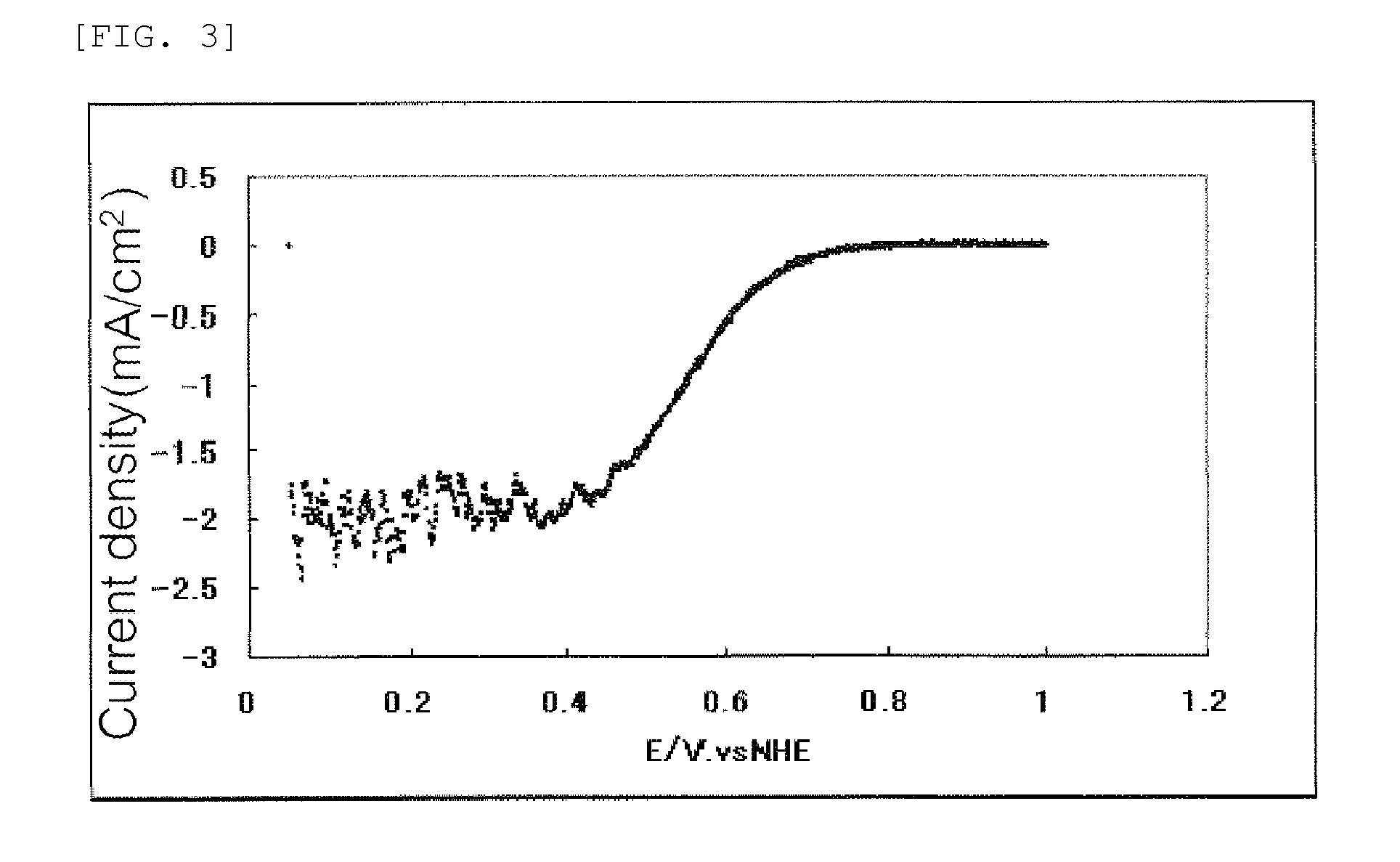Catalyst, process for preparing the same, and uses of the same
a catalyst and catalyst technology, applied in the field of catalysts, can solve the problems of high price of platinum, limited resource, and sometimes dissolving precious metals used for the cathode surface, and achieve the effect of high oxygen reduction activity and excellent performan
- Summary
- Abstract
- Description
- Claims
- Application Information
AI Technical Summary
Benefits of technology
Problems solved by technology
Method used
Image
Examples
example 1
[0133]1. Preparation of Catalyst
[0134]5.10 g (85 mmol) of titanium carbide (TiC) , 0.80 g (10 mmol) of titanium oxide (TiO2) and 0.31 g (5 mmol) of titanium nitride (TiN) were well mixed and heated at 1800° C. for 3 hours in a nitrogen atmosphere to obtain 5.73 g of titanium carbonitride. Since the resulting titanium carbonitride became a sintered body, it was crushed by an automatic mortar.
[0135]An X-ray powder diffraction spectrum of the resulting titanium carbonitride is shown in FIG. 1.
[0136]The results of elemental analysis of the resulting titanium carbonitride are set forth in Table 1.
[0137]In a tube furnace, 298 mg of the resulting titanium carbonitride was heated at 1000° C. for 10 hours with flowing nitrogen gas containing 1% by volume of oxygen gas and 4% by volume of hydrogen gas, whereby 393 mg of an oxycarbonitride of titanium (also referred to as a “catalyst (1)” hereinafter) was obtained.
[0138]An X-ray powder diffraction spectrum of the resulting catalyst (1) is show...
example 2
[0150]1. Preparation of Catalyst
[0151]In a tube furnace, 314 mg of titanium carbonitride obtained in Example 1 was heated at 1000° C. for 3 hours with flowing nitrogen gas containing 1.5% by volume of oxygen gas and 4% by volume of hydrogen gas, whereby 411 mg of an oxycarbonitride of titanium (also referred to as a “catalyst (2)” hereinafter) was obtained.
[0152]An X-ray powder diffraction spectrum of the resulting catalyst (2) is shown in FIG. 4.
[0153]The results of elemental analysis of the catalyst (2) are set forth in Table 1.
[0154]2. Preparation of Electrode for Fuel Cell
[0155]An electrode (2) for a fuel cell was obtained in the same manner as in Example 1, except that the catalyst (2) was used.
[0156]3. Evaluation of Oxygen Reduction Activity
[0157]Catalytic ability (oxygen reduction activity) was evaluated in the same manner as in Example 1, except that the electrode (2) for a fuel cell was used.
[0158]A current-potential curve obtained in this measurement is shown in FIG. 5.
[01...
example 3
[0160]1. Preparation of Catalyst
[0161]In a tube furnace, 314 mg of titanium carbonitride obtained in Example 1 was heated at 1000° C. for 3 hours with flowing nitrogen gas containing 1.0% by volume of oxygen gas and 1.3% by volume of hydrogen gas, whereby 415 mg of an oxycarbonitride of titanium (also referred to as a “catalyst (3)” hereinafter) was obtained.
[0162]An X-ray powder diffraction spectrum of the resulting catalyst (3) is shown in FIG. 7.
[0163]The results of elemental analysis of the catalyst (3) are set forth in Table 1.
[0164]2. Preparation of Electrode for Fuel Cell
[0165]An electrode (3) for a fuel cell was obtained in the same manner as in Example 1, except that the catalyst (3) was used.
[0166]3. Evaluation of Oxygen Reduction Activity
[0167]Catalytic ability (oxygen reduction activity) was evaluated in the same manner as in Example 1, except that the electrode (3) for a fuel cell was used.
[0168]A current-potential curve obtained in this measurement is shown in FIG. 6.
[...
PUM
| Property | Measurement | Unit |
|---|---|---|
| temperature | aaaaa | aaaaa |
| temperature | aaaaa | aaaaa |
| oxygen reduction starting potential | aaaaa | aaaaa |
Abstract
Description
Claims
Application Information
 Login to View More
Login to View More - R&D
- Intellectual Property
- Life Sciences
- Materials
- Tech Scout
- Unparalleled Data Quality
- Higher Quality Content
- 60% Fewer Hallucinations
Browse by: Latest US Patents, China's latest patents, Technical Efficacy Thesaurus, Application Domain, Technology Topic, Popular Technical Reports.
© 2025 PatSnap. All rights reserved.Legal|Privacy policy|Modern Slavery Act Transparency Statement|Sitemap|About US| Contact US: help@patsnap.com



